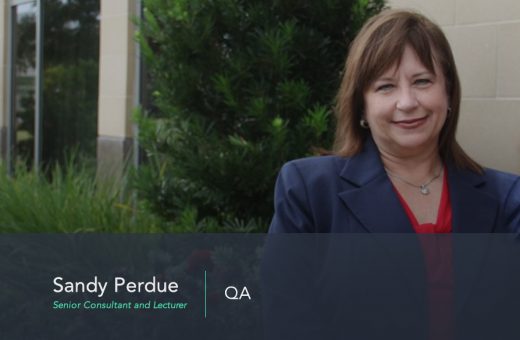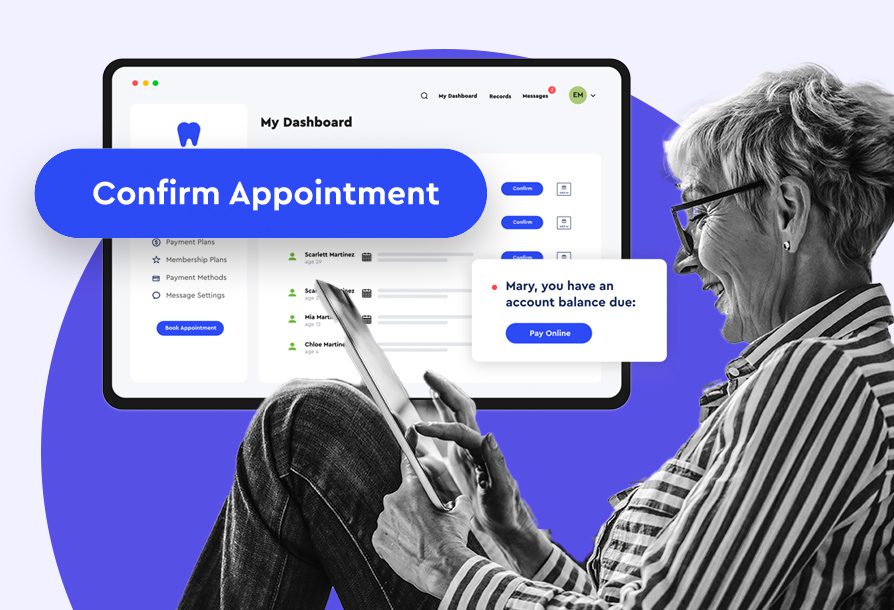How to Grow and De-Stress Your Dental
Practice – Get Expert Tips and Advice

As one of the dental industry’s leading authorities on team training, organization systems, processes, and most importantly RESULTS, Sandy Pardue has over 25 years of experience in growing and de-stressing dental practices.
Through her consulting and speaking experience, she has a unique advantage and understanding of what it takes to motivate teams and create organized, productive dental practices. Spending tons of her time in dental chat rooms, Sandy advises dentists about how to create new processes and systems for their practice.
We sat down with Sandy to discuss the use of dental dashboard analytics. Below is what unfolded in the interview. Spoiler alert, she has been using automated analytics dashboards for dentists for years!
Dr. White (DW): When were you first exposed to automated dental dashboards and dental KPI analytics?
Sandy: I first started using what we called the dental dashboard in 2002. We designed dental practice dashboards that incorporated information from the four areas of a dental front office, which included: (1) insurance (2) financials, (3) scheduling, and (4) reception.
Numbers for each area were then reported to our consulting to be posted in the dental analytics dashboard.
For example, the receptionist would enter statistics regarding the number of new patients for the day, the number of new patient letters sent, and the number of thank you letters sent. Then, the data would be used to generate reports which were displayed in nice grafts for the team to print and present to the doctor at a monthly meeting.
We observed that when team members must present and see the numbers, there is an automatic creation of accountability, especially among hygienists who would compete to better their numbers.
DW: Did you ever encounter dental practices who’s teams resisted change to new systems to effectively track their dental KPIs and dental call tracking?
Sandy: Sure we did! Some team members love call tracking for dental practices and jump right in, while others can be resistant to change, roll their eyes, and hope that you’ll go away without asking them to get involved.
DW: How do you recommend dental practices help get the team on board with a new dental KPI software?
Sandy: It all starts with the doctor. We work with the doctors first to make sure that they understand that it’s impossible to improve their dental practice without measuring their dental marketing efforts. They must measure what’s going on the same way hey measure how fast their car is going and the amount of gas in it.
DW: That’s a great analogy, Sandy. Which would you say are the most important dental KPIs that a hygienist should pay attention to?
Sandy: First and foremost, it’s important to make sure patients are comfortable. If hygienists oversell by pressuring patients too much, practices may lose in the long run because patients will not keep coming in if they are perceived as being too aggressive.
I’d recommend that hygienist’s look at and track their overall production, hourly production, and procedure codes, giving special attention to the number of whitenings sold, fluoride treatments given, sealants placed, night guards sold and the perio codes.
Patients want and deserve the solid explanations on their treatment, and with the Internet, a lot of information they read has made them skeptical, so, hygienists must be trained to listen to patients, understand what’s important, and show them how their oral health relates to those goals.
DW: What percentage of productivity should come from a healthy dental hygiene department?
Sandy: I like to see about 27-28 percent productivity from a dental hygiene department. This is because if hygiene productivity is 40 to 50% of the productivity in the office, I am going to look very closely at what the doctor is doing – as this is typically an indication that the doctor is not doing implants, crowns, and bridges. I’ve even seen occasions where the hygiene team is actually carrying the office because the dentist is not performing procedures with higher levels of compensation.
DW: What do you recommend for dental practices that have hygiene productivity levels under 27%?
Sandy: I would go back to the dental analytics KPI dashboard and look at the number of debridement’s and sealants placed, and look very closely at the perio codes. Oftentimes hygienists simply need to be reminded and made aware that they can make a greater contribution to the office than what they have been.
DW: Out of the total productivity for the hygiene department, how much of that do you think should be perio codes?
Sandy: Approximately 25 to 30 percent of all the hygiene production in a practice should be made up of the 4,000 codes or the perio codes. It’s important to realize that being overly aggressive turns off most patients and usually leads to very short relationships. Undertreating is not beneficial to the patient or the practice. Looking at the right numbers at the right time makes a huge difference to the success of the practice.
DW: That’s the reason I wanted to interview you Sandy! People are looking at these numbers in their dental analytics dashboards and don’t know what to do with them. They only become actionable when you have good advice. Thank you for the great advice that you shared with us.
Sandy: You are most welcome! To learn more about Sandy’s consulting services, visit www.classicpractice.com
Bio for J. Scott White DDS, FAGD
Dr. J. Scott White is passionate about helping doctors, office managers, and consultants discover how dashboard analytics can be used to successfully manage and grow dental practices. Scott joined Practice by Numbers after a successful 26-year career as a general dentist in Richmond Virginia, where he owned and managed a sedation, cosmetic, implant, and rehabilitative dentistry practice with his wife, Dr. Pranee C. White.
Scott is a native Virginian and received his BS in Biology from James Madison University and his DDS from Virginia Commonwealth University. On the road to becoming a Fellow in the Academy of General Dentistry, he studied with many great educators including David Hornbrook, Carl Misch and Peter Dawson. His hobbies include fly-fishing, hiking, gardening and scuba diving.

